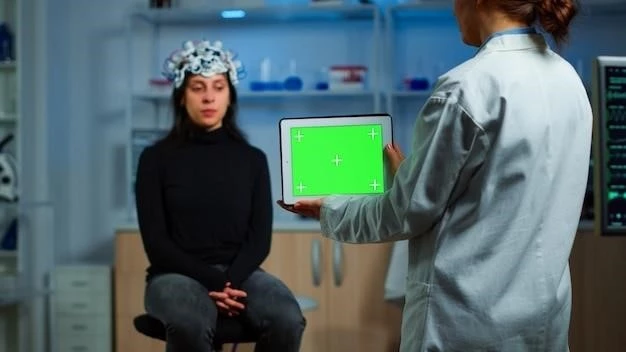Understanding Neurological Conditions
Neurological conditions can be complex and overwhelming‚ but understanding them is the first step towards effective management. From Charcot-Marie-Tooth Disease to Parkinsonism‚ each condition requires tailored strategies for coping and treatment. Explore the genetic factors‚ lifestyle tips‚ and support strategies to empower individuals facing these challenges.
Understanding Charcot-Marie-Tooth Disease
Charcot-Marie-Tooth Disease (CMT) is a hereditary neurological condition affecting motor and sensory nerves. It can lead to muscle weakness‚ foot deformities‚ and difficulty walking. Understanding CMT involves knowing it’s a progressive disorder with varying symptoms and severity. Genetic factors play a significant role‚ so genetic counseling is crucial for families with a history of CMT. Early diagnosis and proactive management can help slow down its progression and improve quality of life. Seeking support from healthcare professionals‚ joining support groups‚ and staying informed about the latest research can empower individuals living with CMT to navigate the challenges more effectively.
Managing Ptosis Symptoms Effectively
Ptosis‚ or drooping eyelids‚ can be managed effectively through various treatment options depending on the underlying cause. From lifestyle adjustments like getting enough rest and avoiding eye strain to medical interventions such as eye drops or surgery‚ there are strategies to alleviate ptosis symptoms. Consulting with an ophthalmologist for a comprehensive eye examination can help determine the best course of action. Adhering to the prescribed treatment plan‚ practicing good eye hygiene‚ and protecting your eyes from irritants can aid in managing ptosis and improving eye health. Remember‚ early intervention and regular follow-ups are key to effectively managing ptosis symptoms and maintaining optimal eye function.
Exploring the Link Between Parkinsonism and Neurodegenerative Diseases
Parkinsonism shares similarities with certain neurodegenerative diseases like Parkinson’s disease‚ which can present with symptoms such as tremors‚ stiffness‚ and slowness of movement. Understanding the link between Parkinsonism and neurodegenerative diseases involves recognizing the common underlying processes affecting the brain’s dopaminergic system. Exploring this connection can lead to better diagnosis and treatment approaches tailored to each individual. It’s essential to consult with a neurologist specializing in movement disorders for accurate diagnosis and personalized care. Embracing lifestyle modifications‚ engaging in physical activities‚ and adhering to medication regimens can help manage symptoms and improve quality of life for individuals dealing with Parkinsonism and related neurodegenerative conditions.
Lifestyle Tips for Coping with Charcot-Marie-Tooth Disease
Coping with Charcot-Marie-Tooth Disease involves incorporating lifestyle changes to manage symptoms and enhance quality of life. Maintaining a balanced diet rich in nutrients and staying hydrated can support overall health and energy levels. Physical therapy and low-impact exercises can help improve mobility and strength. Utilizing mobility aids and orthopedic devices as needed can assist in daily activities. Adequate rest and stress management techniques can help reduce fatigue and improve well-being. Additionally‚ creating a supportive environment‚ seeking emotional support from loved ones‚ and connecting with CMT-specific communities can offer valuable encouragement and guidance throughout the journey with the condition.
Treatment Options for Ptosis
Effective management of ptosis involves various treatment options tailored to the individual’s needs. Depending on the underlying cause and severity of the drooping eyelids‚ treatments may include eye drops to improve muscle function‚ surgery to repair weakened eyelid muscles‚ or the use of specialized glasses to lift the eyelids. Consulting with an ophthalmologist is essential to determine the most suitable treatment approach. Following the recommended treatment plan diligently and attending follow-up appointments can help monitor progress and adjust interventions as needed. It’s important to address ptosis early to prevent potential vision impairments and improve both the aesthetic appearance and functionality of the eyes.
Parkinsonism⁚ Causes and Symptoms
Parkinsonism encompasses a group of neurological conditions that share symptoms resembling Parkinson’s disease. The causes of Parkinsonism can vary‚ including genetic factors‚ environmental triggers‚ or underlying health conditions. Common symptoms of Parkinsonism may include tremors‚ bradykinesia (slowness of movement)‚ rigidity‚ and postural instability. Recognizing these symptoms early is crucial for prompt intervention and management. If you or a loved one experience any of these signs‚ seeking evaluation by a neurologist specialized in movement disorders is recommended. Treatment options‚ such as medications‚ physical therapy‚ and lifestyle adjustments‚ can help alleviate symptoms and enhance quality of life for individuals living with Parkinsonism.
Genetic Factors in Charcot-Marie-Tooth Disease
Charcot-Marie-Tooth Disease (CMT) is primarily caused by genetic mutations that affect the peripheral nerves controlling muscle movement and sensation. Understanding the genetic factors involved in CMT can help individuals and families navigate the condition better. Genetic testing and counseling play a crucial role in diagnosing CMT subtypes‚ assessing the risk of inheritance‚ and making informed family planning decisions. It’s important to consult with a genetic counselor or a healthcare provider specializing in genetic disorders to understand the inheritance pattern and implications. By staying informed about the genetic aspects of CMT‚ individuals can take proactive steps towards managing the condition‚ accessing appropriate care‚ and improving their overall well-being.

Support Strategies for Individuals with Parkinsonism
Living with Parkinsonism can present unique challenges‚ but effective support strategies can make a significant difference in managing the condition. Joining Parkinson’s disease support groups or online communities can provide valuable emotional support‚ practical advice‚ and a sense of community. Engaging in physical therapy‚ speech therapy‚ and occupational therapy can help individuals maintain mobility‚ communication skills‚ and independence. Caregiver support and respite care are essential to prevent burnout and ensure the well-being of both individuals with Parkinsonism and their caregivers. Exploring assistive devices‚ home modifications‚ and adaptive technologies can enhance safety and accessibility at home. By building a strong support network and accessing resources tailored to Parkinsonism‚ individuals can navigate the challenges more effectively and improve their quality of life.
